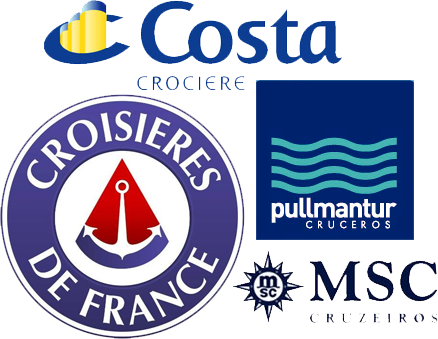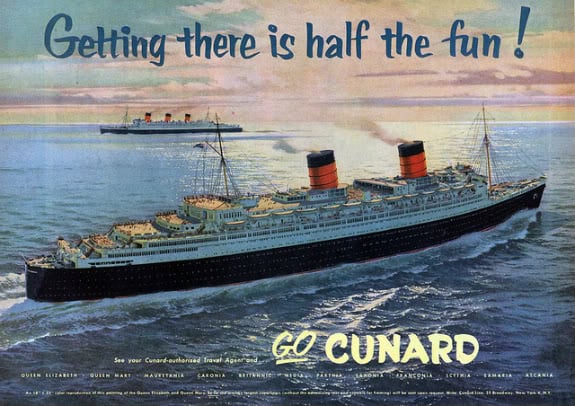Those of us in English speaking countries talk about cruise vacations, cruise ships, cruise lines, etc. In many other parts of the world the verbiage is a bit different. In Romance languages you'll notice the words for cruising all sound very similar to one another:
Cruceros, croisières, crociere, and cruzeiros.

Why? It actually has more to do with the history of cruising than you might think.
Before the days of The Love Boat, and associations with fruity drinks and exotic destinations, there was a basic purpose large passenger ship served. Transportation. Prior to airplanes people still had a need to get from Europe to the Americas, and the only answer was the ship. As a great book is titled, it was, "The Only Way To Cross".
The grand ocean liners we see portrayed in movies came about largely in the early 1900s with ships like Cunard's Lusitania in 1906 and even White Star Line's ill-fated Titanic. These vessles carried passengers in different areas of the ships depending on the 'class' the passengers booked. Generally, this was divided up into steerage, tourist, and first class. Passengers were very much kept seperate but very frequently had one thing in common, they were trying to cross the Atlantic Ocean. There may have been only one way to cross the Atlantic, but there were plenty of companies working hard to take their share of passengers, provide greater speed, and even greater luxury. In a bid for this part of the market, Cunard came up with an ad slogan that I bet most of us are familiar with despite not knowing the origin. Cunard pointed out that, "Getting there is half the fun!"

In 1919 the first airplane crossed the Atlantic (though with multiple stops). By the mid 1950s large, reliable aircraft could cary scores of passengers across the Atlantic in hours, rather than days. The heyday of Transatlantic crossings, or simply, "crossings" as they'd become known, was coming to an end.
In the 1960s and 70s, cruise ferries in Europe were brought over to the Americas to begin shuttling tourists to destinations in the Caribbean and Pacific, representing the inital sparks of the modern leisure-cruise era. The language, in many countries however stuck. These new voyages in warmer waters continued to be "crossings" for many.
In Spanish, the verb "to cross" is cruzar. In romance languages, this common verb has become a noun, used in referring to cruises. In Spanish, the "crucero", in French, "croisières", in Italian, "crociere", and in Portuguese, "cruzeiros". This is even reflected in many of the brands shown in this article. This means, the next time you hear someone talk about cruising in another language, they may be, knowingly or not, referring to a time when these great ships really were the only way to cross.
For some quick definitions of various nautical terms check out Nautical Terms for Cruisers.
Have questions about the origins of cruising? A story about family crossing the Atlantic in the golden age of ocean liners? Comment below!

